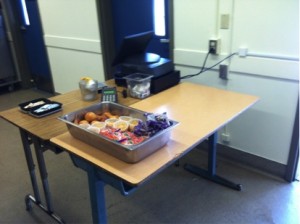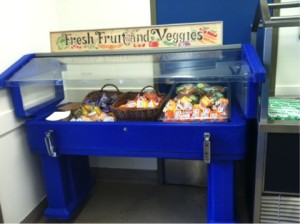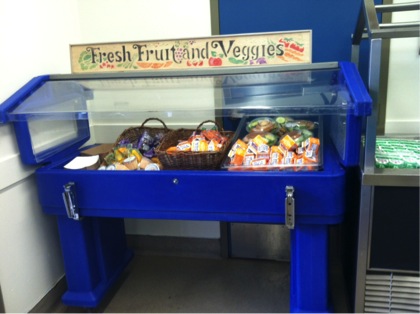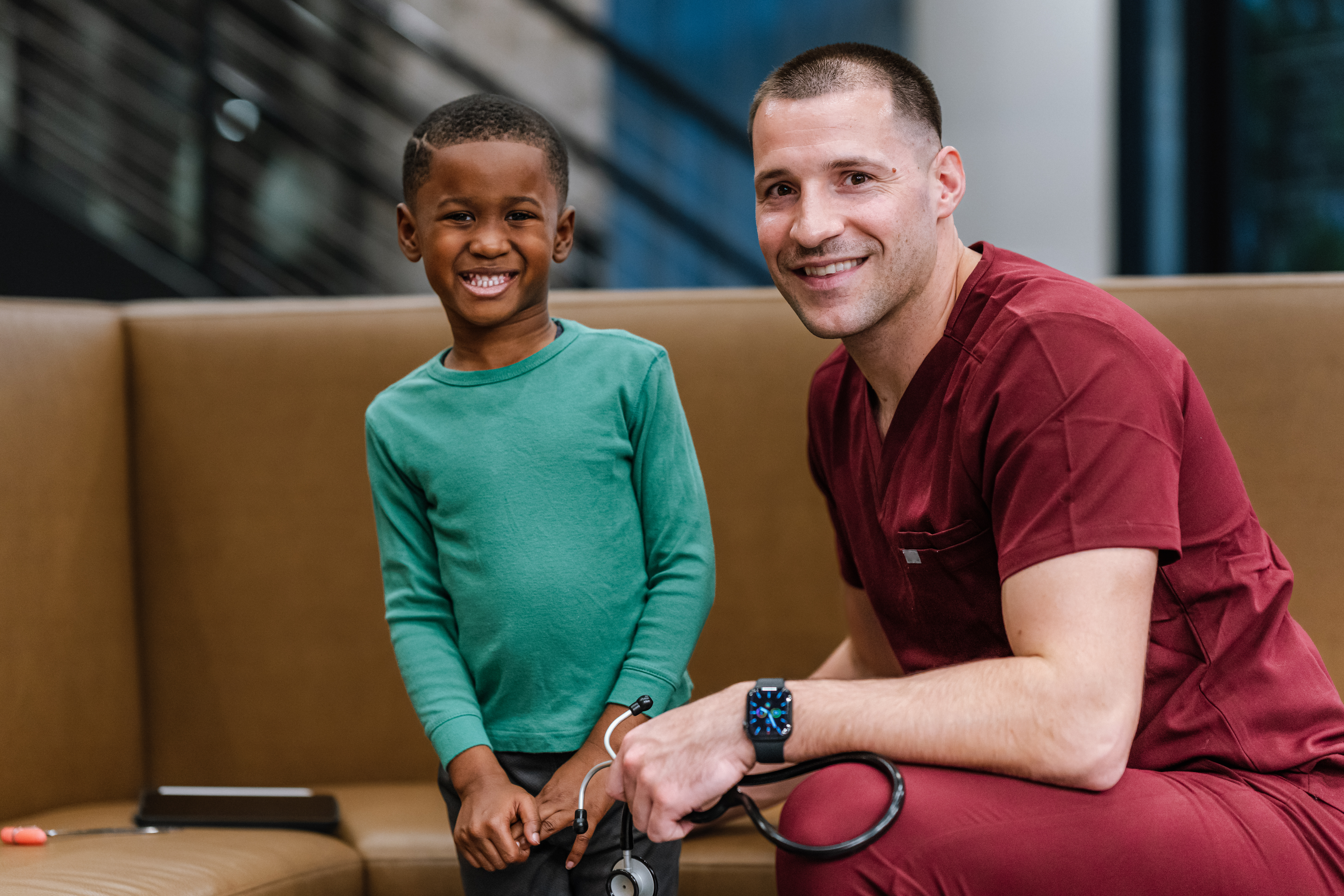The following success story about the Smarter Lunchroom Movement taking shape in Tustin, Calif. was written by Mackenzie Gomes, 2014 summer intern at the Dairy Council of California.
In Tustin, Calif., the Falcons at C. E. Utt Middle School are off to a fresh start this school year! School food service director, Teresa Squibb, is committed to ensuring that her students benefit from the nutrient-rich foods she provides daily. In the quest to increase and support healthy eating habits among students, Squibb pulled together the help of two certified Smarter Lunchrooms Movement technical assistant providers — Susan Magrann, nutrition education coordinator of the Orange County Department of Education, and Tracy Conkey, senior community nutrition adviser with Dairy Council of California — to strategize on how to transform the Falcon Kitchen. Squibb expressed the “need to not only encourage students to choose the healthier food options but to enjoy eating them too.”
Based out of the Cornell Center for Behavioral Economics in Child Nutrition Programs, the Smarter Lunchroom Movement uses evidence-based principles and low- or no-cost ideas to promote consumption of healthy school lunch options. A smartly run lunchroom nudges students toward making better choices on their own by changing the way their options are presented in the cafeteria.

After evaluating the structure of the lunchroom using a simple assessment tool — the Smarter Lunchroom ScoreCard — in combination with student and teacher feedback, the team was able to prioritize their efforts and make changes.
A fresh selection of fruits and vegetables were placed in a pleasant presentation of baskets near the cash registers. This provided students with a second, opportunity to choose a fruit and vegetable of their liking to their tray while also presenting it in an appealing and convenient way to grab healthy choices before purchasing their lunch.
“Providing options between two different fruits or vegetables allows students to take ownership of their choices and they are more likely to eat what they take” said Squibb.
Additionally, milk cartons were raised from their low, sunken bins to be more visible to the students. The white-to-flavored-milk ratio was increased to provide a more abundant offering, and juice was moved further down the service line to the fruit section, away from the milk. These no-cost changes alone doubled the sale of white milk.

“The Smarter Lunchrooms Movement takes a unique perspective on school lunch in that the principles encourage my food service staff to think of their students as young customers,” said Squibb.
The staff at the Falcon Kitchen embraced these new strategies and helped identify additional areas for improvement. The cafeteria manager made tablecloths out of fabric in the school colors, adding an element of warmth and school spirit to the lunchroom. “It isn’t always about the food,” explains Squibb. “We all like to choose where we go to eat and students only have one option during the school day. By improving the aesthetics and incorporating Falcon pride we can create an environment that students want to be a part of.”
Another very simple but powerful change was moving the trash cans away from the entrances and exits. “This simple change discourages students from automatically throwing unwanted food away as they exit the cafeteria,” explains Conkey. “The Smarter Lunchroom Movement is valuable because it has given us a focal point to help schools change student’s perspectives about school lunches,” explains Magrann.
These are only the start of the changes that school food service director, Teresa Squibb, has in mind as the year progresses. Squibb acknowledges that she wouldn’t be as successful without the full support her Smarter Lunchrooms technical assistant providers and the school administrators and staff who not only embraced these strategies but ran with them. Squibb says, “When positive changes are this easy and I have the support system that I do, I know we can keep making improvements that benefit our students’ health.”
Learn more about the Smarter Lunchroom Movement.



